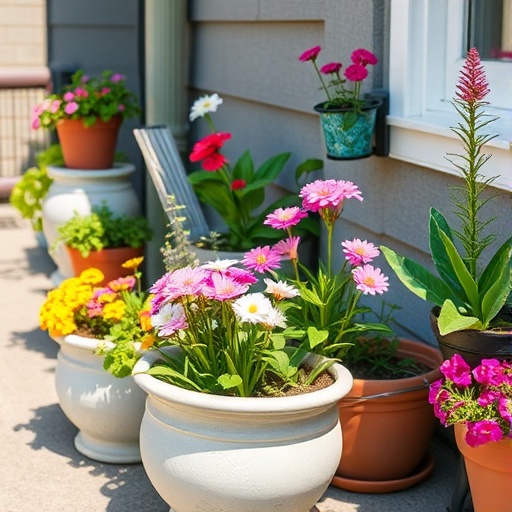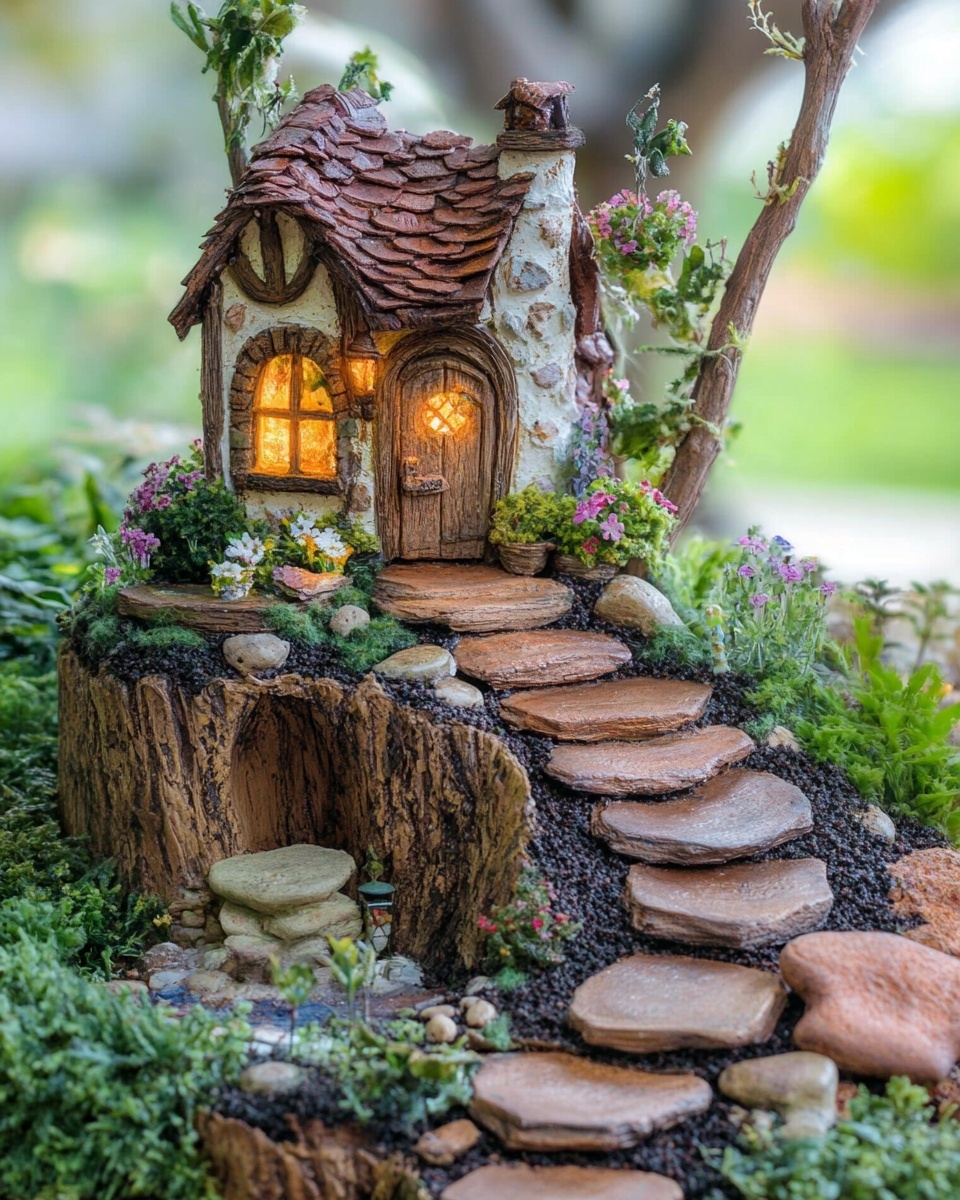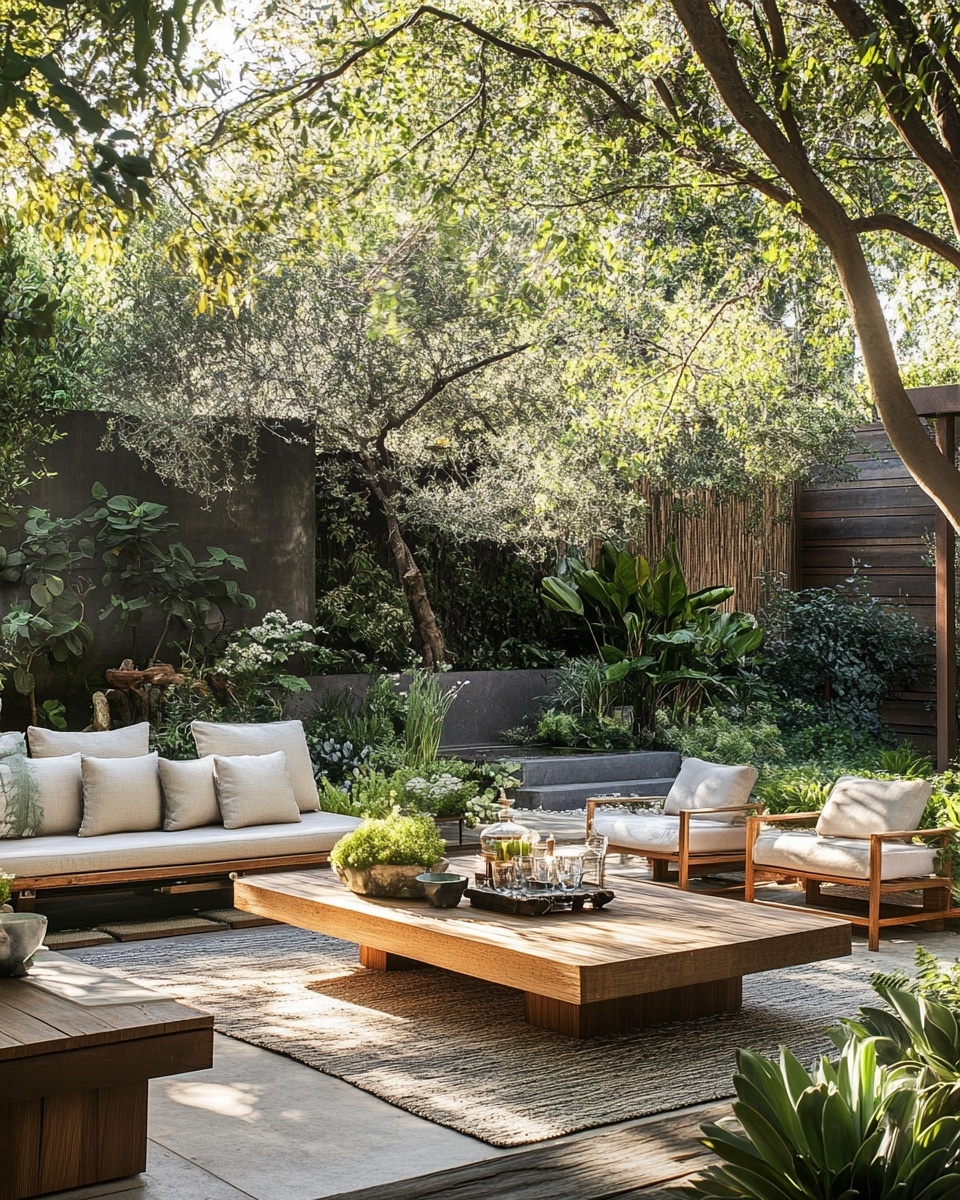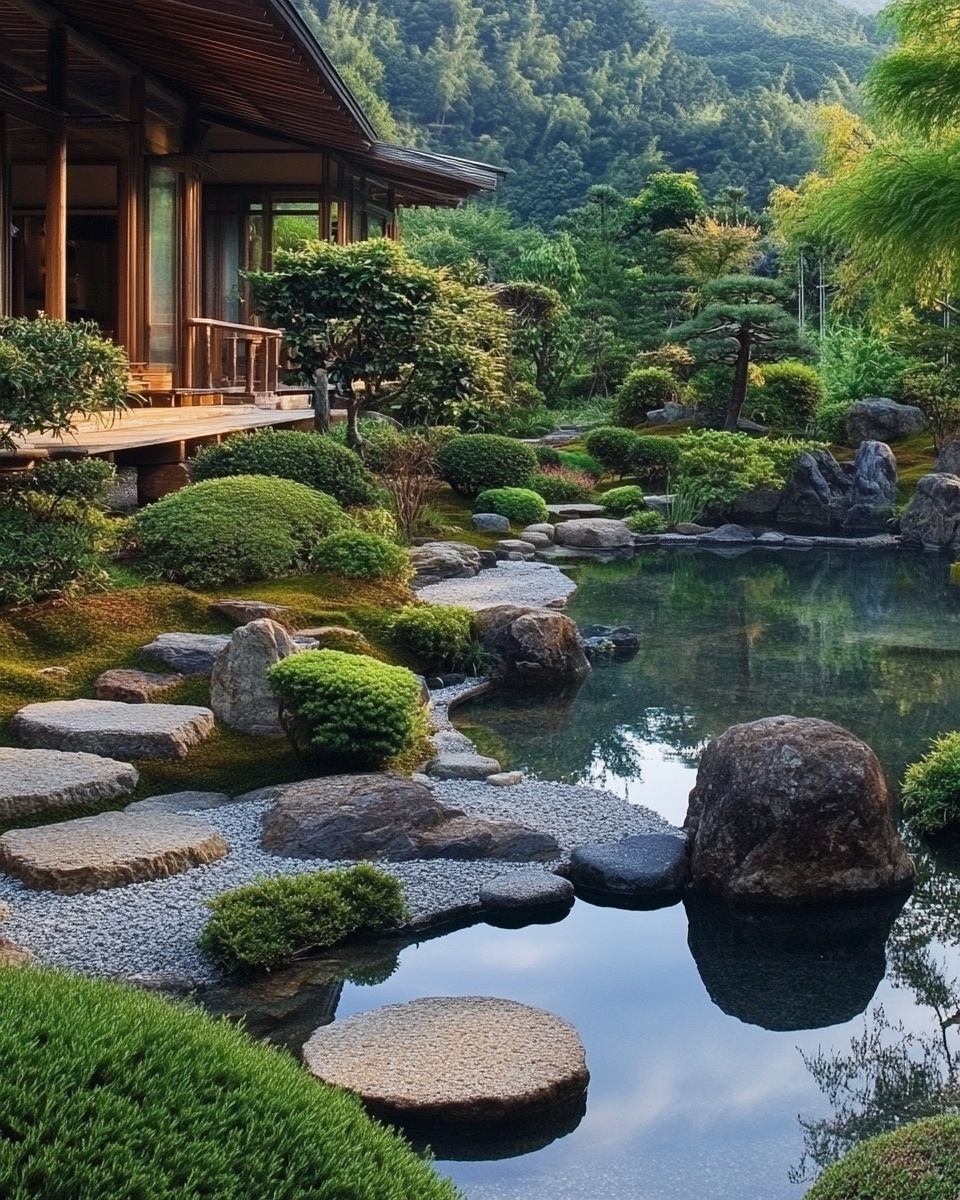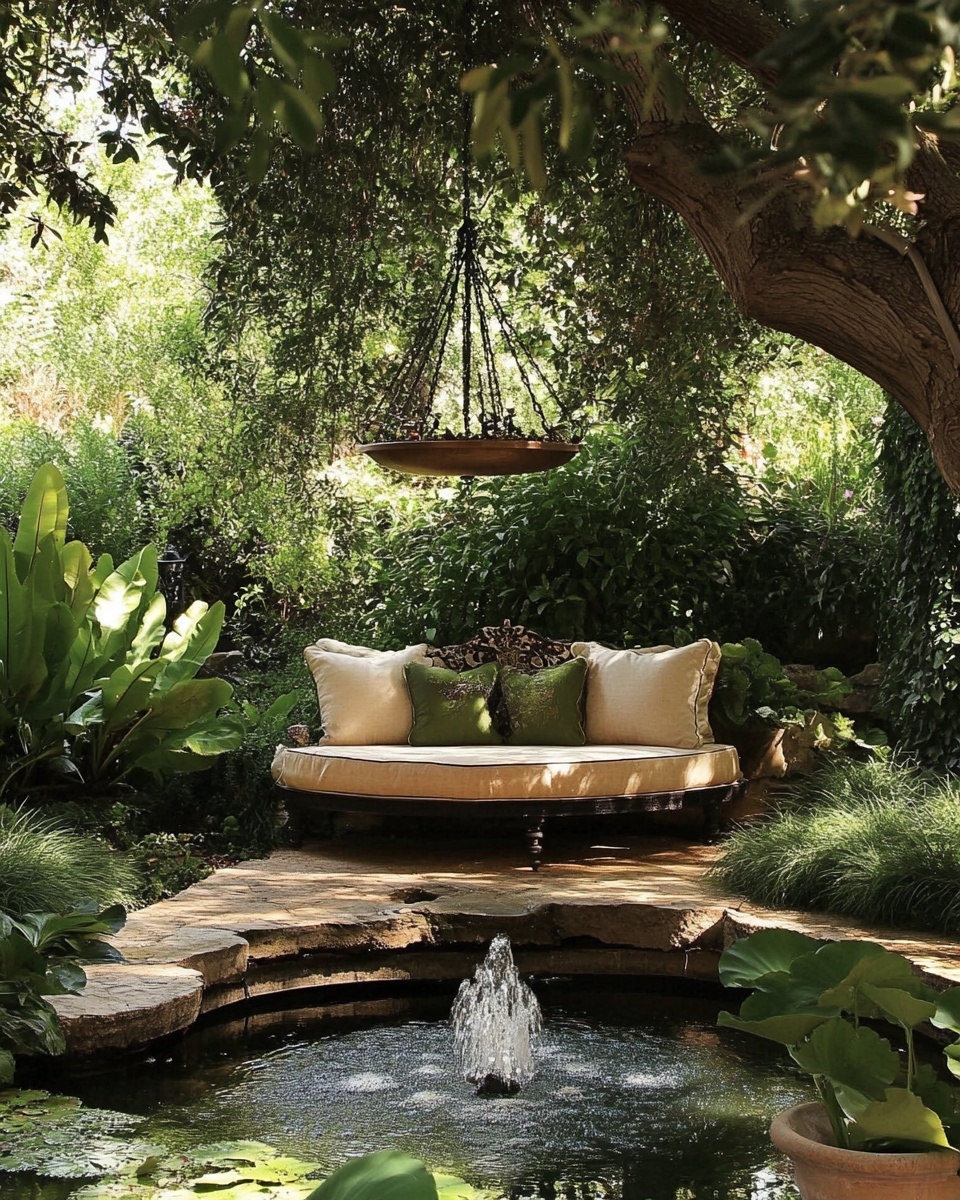Introduction
Do you believe a sprawling backyard is essential for a flourishing flower garden? What if I told you that over 70% of urban gardeners successfully grow vibrant blooms in spaces smaller than 100 square feet? The truth is, cultivating a stunning garden, even with limited square footage, is entirely achievable, and you don’t need an endless budget to do it. Creating beautiful small garden ideas on a budget transforms compact areas into lush, personalized sanctuaries. This guide will walk you through the specifics of designing, planting, and maintaining a captivating small flower garden, proving that big beauty can indeed come in small packages, without breaking the bank.
Tools & Materials Needed
Embarking on your small garden adventure requires a few essential items, but remember, resourcefulness is key when tackling small garden ideas on a budget. Here’s what you’ll need:
- Containers: Don't underestimate the power of pots! Terracotta pots, plastic containers, raised beds, or even repurposed items like old tires, wooden crates, or colanders can make excellent planters. Aim for a variety of sizes and shapes to add visual interest. For eco-friendly alternatives, consider fabric grow bags which offer excellent aeration and drainage while being incredibly lightweight.
- Gardening Soil: A good quality potting mix is crucial for container gardening. Look for a lightweight, well-draining blend rich in organic matter. Avoid using heavy garden soil directly in pots, as it compacts easily and can suffocate roots. For a budget-friendly option, consider mixing your own: two parts compost, one part perlite (for drainage), and one part coco coir (for moisture retention).
- Seeds or Seedlings: Starting from seed is often the most economical choice for small garden ideas on a budget. Look for varieties labeled "compact," "dwarf," or "suitable for containers." If you prefer a head start, choose healthy seedlings from a local nursery.
- Hand Trowel and Cultivator: These small tools are perfect for working in tight spaces. A hand trowel for digging and planting, and a small cultivator for loosening soil and weeding.
- Watering Can with a Fine Rose: Essential for gentle watering, especially for delicate seedlings.
- Gardening Gloves: Protect your hands from dirt and thorns.
- Pruning Shears/Snips: For deadheading spent blooms and light trimming.
- Optional but Recommended:
- Slow-Release Fertilizer: Provides a steady supply of nutrients.
- Mulch: A thin layer of straw, wood chips, or shredded leaves helps retain moisture and suppress weeds in larger containers.
- Vertical Garden Planters: Excellent for maximizing space when implementing small garden ideas on a budget. Read more about this here: vertical-indoor-garden-ideas-for-small-spaces/
Time & Effort Overview
Creating and maintaining a small flower garden, particularly when focused on small garden ideas on a budget, is surprisingly time-efficient and rewarding.
- Initial Setup (Planting): Depending on the number of containers and the complexity of your design, expect to spend anywhere from 2-4 hours for a modest balcony setup to one full weekend for a more elaborate small backyard transformation. This is about 30% faster than planning and digging a traditional in-ground flower bed.
- Ongoing Maintenance: This is where the beauty truly flourishes. Daily checks will take only 5-10 minutes, primarily for watering. Weekly tasks like deadheading, light pruning, and pest inspection might total 30-60 minutes.
- Difficulty Level: This project is firmly in the beginner-to-intermediate category. The confined nature of small spaces simplifies many gardening challenges, making it perfect for those new to horticulture. Don't be intimidated; even a novice can achieve stunning results with these small garden ideas on a budget.
Step-by-Step Gardening Process
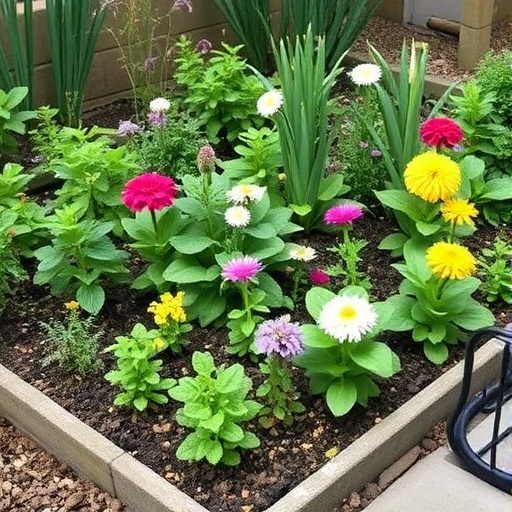
Ready to get your hands dirty? Let's turn those small garden ideas on a budget into a beautiful reality with these straightforward steps.
Step 1: Planning Your Small Space Sanctuary
Before you plant a single seed, measure your space. Observe how much sunlight your chosen area receives throughout the day. Full sun (6+ hours), partial sun (3-6 hours), or shade (less than 3 hours) will dictate your plant choices. Sketch out a simple diagram of where you want containers, considering height, color, and texture. Think vertically! Look for opportunities to hang planters or create tiered arrangements. This crucial planning stage ensures your plants thrive and your design shines.
Step 2: Selecting Your Floral Friends
This is the fun part! Opt for compact, long-blooming varieties. For sunny spots, petunias, marigolds, dwarf zinnias, or portulaca are fantastic. For shadier areas, impatiens, fuchsias, or begonia offer vibrant color. Prioritize native plants as they require less water and maintenance, fitting perfectly with small garden ideas on a budget. Don’t worry if you’re unsure; most plant tags provide excellent light requirements. Consider plants that attract pollinators, too! You can find more tips on this here: how-to-attract-butterflies-and-bees-with-flowers/
Step 3: Preparing Your Containers and Soil
Ensure all containers have drainage holes. If not, drill some! Line the bottom with a few inches of gravel or broken pot pieces to prevent soil from washing out. Fill containers with your chosen potting mix, leaving about an inch or two from the rim. Good soil is the foundation for healthy plants. Think of it as a cozy, nutritious bed for your flowers.
Step 4: Planting Your Seeds or Seedlings
If using seeds, follow packet instructions for depth and spacing. For seedlings, gently remove them from their nursery pots. Tease apart any root-bound bottoms carefully. Dig a hole large enough for the root ball, place the plant, and backfill with soil, gently firming around the base. Water immediately to settle the soil. Don’t worry if a few leaves droop initially; they'll perk up with a good drink.
Step 5: Initial Watering and Placement
After planting, give your newly installed flora a thorough watering until water drains from the bottom of the container. This helps eliminate air pockets and establishes root contact with the new soil. Place your containers in their pre-determined spots, ensuring they receive the appropriate light exposure. Initial watering is critical for plant survival.
Step 6: Ongoing Care and Enjoyment
For the first few weeks, monitor your plants closely. Water regularly, check for pests, and admire your growing endeavors. Deadhead spent blooms to encourage new flowers. This simple act of removing faded flowers can boost overall bloom production by up to 20-25% in many annuals. Celebrate every new bud and bloom – you’ve created something truly beautiful!
Growth & Care Tips
Consistent care ensures your small garden ideas on a budget truly flourish. Here’s how to keep your blooms beaming:
- Watering Frequency: This is paramount, especially for container gardens which dry out faster than in-ground beds. Check the soil moisture daily by sticking your finger about an inch deep. If it feels dry, water thoroughly until it drains from the bottom. Overwatering causes root rot in nearly 70% of reported container plant issues. Adjust frequency based on weather, plant type, and container material. Terracotta dries out faster than plastic.
- Sunlight Exposure: As noted, adequate sunlight is non-negotiable. Most flowering annuals and perennials require at least 6 hours of direct sunlight. If your space is shadier, select shade-tolerant varieties like impatiens or fuchsias. Rotate containers occasionally to ensure even growth toward the light.
- Pruning & Deadheading: Regularly snip off spent flowers (deadhead) to encourage new blooms and prevent the plant from putting energy into seed production. Pinch back leggy growth to promote a bushier, more compact plant. For a continuous show, perform this every week or two during peak bloom.
- Fertilization: Container plants deplete soil nutrients quickly. Use a balanced liquid fertilizer every 2-4 weeks, or incorporate a slow-release granular fertilizer at the beginning of the growing season. Follow product instructions carefully to avoid over-fertilization, which can burn roots.
- Pest Prevention: Healthy plants are naturally more resistant to pests. Inspect your plants regularly for signs of trouble (discolored leaves, sticky residue, visible insects). Early detection is key. For common pests like aphids or spider mites, a gentle spray of insecticidal soap or neem oil is often effective. Encourage beneficial insects by planting dill or marigolds near your flowers.
Eco-Friendly & Sustainable Alternatives
Embracing sustainable practices complements small garden ideas on a budget perfectly. Not only do they save money, but they also contribute to a healthier planet.
- Composting: Start a small worm bin or a countertop compost system for kitchen scraps. This "black gold" enriches your soil, reduces waste, and eliminates the need for purchased fertilizers. It's a fantastic, free nutrient booster.
- Rainwater Harvesting: Collect rainwater in barrels or simple buckets. Rainwater is free of chlorine and other chemicals found in tap water, making it excellent for plants, and significantly reduces your water bill – a true budget win!
- DIY & Repurposed Planters: Instead of buying new, look around for items to repurpose. Old colanders, tin cans (with drainage holes added), plastic bottles cut in half, or even old shoes can become quirky, character-filled planters. This aligns beautifully with the 'budget' aspect of small garden ideas on a budget.
- Native Plants: Choose flowers native to your region. They are naturally adapted to your local climate and soil conditions, requiring less water, fertilizer, and pest intervention. This also supports local biodiversity.
- Vertical Gardening: Maximize every inch. Upcycle pallets into vertical planters, use hanging baskets, or build simple shelving units. This technique allows you to grow significantly more in a tiny footprint. Check out vertical-balcony-herb-garden-design-ideas/ for inspiration.
Creative Ideas & Uses
Beyond just growing, integrate your small garden into your living space to elevate its aesthetic and functionality. These small garden ideas on a budget are all about turning constraints into creative opportunities.
- Tiered Displays: Create visual depth by arranging pots on varying height stands, old crates, or even an old ladder. This draws the eye upwards and allows more plants to capture sunlight.
- Color Blocking & Theme Gardens: Design sections of your garden with a single color palette (e.g., all blues and purples) or a specific theme (e.g., a "cottage garden" mix of informal blooms). This adds sophisticated design without extra cost.
- Edible Flowers: Incorporate edible blooms like nasturtiums, calendula, or pansies. They add beauty to your garden and a gourmet touch to your salads and desserts.
- Upcycled Decor: Paint your repurposed containers in bright, cheerful colors. Incorporate whimsical elements like old teacups as mini-planters or small statues. Personalize your space; it’s an extension of you.
- Nighttime Ambiance: Add solar-powered fairy lights or small lanterns among your plants. This transforms your small garden into a magical retreat by night, creating a whole new experience. For more landscaping inspiration, check out https://www.pinterest.com/janatjanay47/.
Common Mistakes to Avoid
Even seasoned gardeners make slip-ups. Being aware of these common pitfalls will save you headaches and help ensure your small garden ideas on a budget thrive.
- Overwatering is the #1 Killer: As mentioned, overwatering is responsible for approximately 60% of plant deaths in containers. When roots sit in waterlogged soil, they can't access oxygen, leading to root rot. Always check soil moisture before watering.
- Ignoring Drainage: Without drainage holes, excess water has nowhere to go, inevitably suffocating roots. Ensure every container has adequate holes. If a pot lacks them, it's not a planter, it's a vase!
- Using Garden Soil in Pots: Garden soil is heavy, compacts easily, and often harbors pests and diseases. Always use a high-quality, lightweight potting mix for containers.
- Neglecting Sunlight Requirements: "Partial sun" does not mean "deep shade." Placing a full-sun plant in a dark corner will result in leggy, weak, and non-flowering specimens. Match the plant to the light.
- Purchasing Unhealthy Plants: Inspect seedlings thoroughly at the nursery. Avoid plants with yellowing leaves, pests, or signs of stress. A healthy start is crucial for long-term success.
- Overcrowding Containers: While tempting to pack in as many plants as possible, overcrowding leads to competition for resources, reduced airflow, and increased disease risk. Give your plants room to breathe and grow.
Maintenance & Storage Tips
Long-term success for your small garden ideas on a budget depends on ongoing maintenance and thoughtful seasonal preparation.
- Seasonal Refresh: For annuals, once they’ve finished their bloom cycle, it's time to remove them and refresh the soil for new plantings. Perennials, on the other hand, will return year after year. For fall, consider planting pansies or ornamental cabbage for continued winter interest.
- Soil Rejuvenation: Container soil tends to lose its structure and nutrients over time. Each season or year, amend your old potting mix with fresh compost and a slow-release fertilizer. This revitalizes the medium.
- Seed Storage: If you're using seeds, store unopened packets in a cool, dark, dry place. An airtight container in the refrigerator can extend their viability for several years. Label everything!
- Winterizing: For delicate perennials or certain annuals in colder climates, some plants can be brought indoors or provided with winter protection. Mulch around container roots or move pots into a sheltered area. Alternatively, focus on easy-to-grow annuals that provide a season of color and then compost their remains. For more comprehensive seasonal gardening tips, visit flower-gardening-tips-for-every-season/.
- Addressing Yellow Leaves: Yellow leaves often indicate overwatering, nutrient deficiency, or sometimes natural aging. Check drainage first, then consider a balanced liquid feed.
- Poor Soil Drainage: If water sits on top of your soil for too long, it's likely compacted or lacks proper drainage material. Gently aerate the soil with a chopstick or consider repotting with a better-draining mix, perhaps adding more perlite or grit.
Conclusion
Creating a vibrant, beautiful flower garden, even with limited space and a tight budget, is not just a dream—it's an entirely achievable, deeply rewarding reality. By embracing smart planning, creative container use, and consistent care, you can transform any small area into your own personal floral oasis. We’ve discovered that implementing small garden ideas on a budget means being resourceful, attentive, and imaginative. From selecting the right plants and understanding their needs, to adopting eco-friendly practices and avoiding common pitfalls, you now have the knowledge to cultivate success. So, why wait? Grab your trowel, select your favorite blooms, and embark on this joyful journey. We encourage you to start planting today, share your progress with us, and explore our other guides for even more brilliant gardening solutions!
FAQ
Q1: What are the easiest flowers to grow in a small container garden on a budget?
A1: For beginners looking for small garden ideas on a budget, impatiens (shade), marigolds (sun), petunias (sun), and nasturtiums (sun/partial sun) are excellent choices. They are generally low-maintenance, readily available as seeds or seedlings, and provide abundant blooms. Find more ideas here: easy-flowers-to-grow-for-beginners/.
Q2: How do I ensure my small garden gets enough sunlight when my space is mostly shaded?
A2: If your small space is perpetually shady, focus on shade-loving plants like fuchsias, begonias, impatiens, coleus (for foliage), or hostas. You can also use light-colored pots to reflect more ambient light and consider moving pots to capture any fleeting moments of sun that appear throughout the day.
Q3: Can I really grow a beautiful flower garden using only repurposed materials?
A3: Absolutely! Repurposing items like old tires, wooden pallets, plastic bottles, or colanders is a fantastic way to execute small garden ideas on a budget. Just ensure they are clean, safe, and have adequate drainage holes. They add character and save money.
Q4: How often should I fertilize my container flowers for best results?
A4: Container plants generally need more frequent fertilization than in-ground plants because nutrients leach out with watering. For most flowering annuals, a balanced liquid fertilizer applied every 2-4 weeks or a slow-release granular fertilizer mixed into the potting soil at the beginning of the season is recommended to support continuous blooming.
Q5: What's the best way to keep pests away from my small garden organically?
A5: Healthy plants resist pests better. Regularly inspect your plants. For common pests like aphids, a strong spray of water or a homemade insecticidal soap solution (a few drops of mild dish soap in a spray bottle of water) often works wonders. Planting companion flowers that repel pests, like marigolds, is also effective.
Q6: My flowers are leggy and not blooming much. What am I doing wrong?
A6: Leggy growth and poor blooming usually indicate insufficient light, inadequate nutrients, or a lack of deadheading. Ensure your plants are getting enough sunlight for their specific needs. Fertilize regularly, and consistently snip off spent flowers to encourage new bud formation. Sometimes, pinching back leggy stems can promote bushier growth.
Q7: How do I keep my small garden looking good year-round on a budget?
A7: For continuous appeal with small garden ideas on a budget, incorporate a mix of annuals (for seasonal color), perennials (for returning blooms), and evergreen foliage plants. In autumn, replace summer annuals with cold-hardy options like pansies or ornamental kale. Consider plants that offer winter interest, such as those with colorful bark or berries, or even small evergreens in decorative pots.
For more inspiration on maximizing your small space, check out our guide on balcony-herb-garden-ideas-for-beginners/. If you're looking for flowers that come back reliably, our post on best-perennial-flowers-for-continuous-blooms/ offers some great suggestions. And if you're ever curious about taking your blooms indoors, you might enjoy reading about how-to-grow-a-cut-flower-garden-at-home/ for tips on bringing your garden beauty inside.
